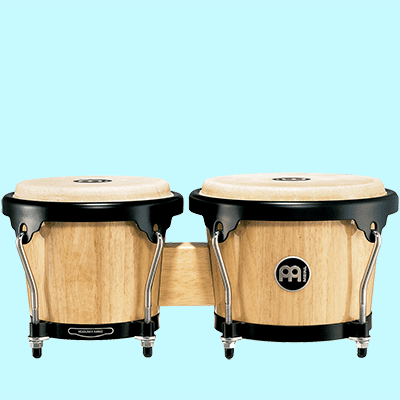Creating an organic bongo groove using individual hits allows for greater control than using loops. We show you how.
Beat Dissected is a regular series in which we deconstruct drum patterns, showing you how to recreate them in any DAW. Just copy our grid in your own software to recreate the loop.
Here’s the beat we’re building today:
Audio PlayerTo download the samples for this beat, click here. The samples are provided on a completely royalty-free basis. They may not be sold or given away, either in whole or in part.
You must register for a free Attack account and sign up to receive our newsletter in order to download the samples. New members can register here. Existing members can log in here.
Spec
Tempo
110-135Swing
50-60%Sounds
real bongo samplesStep 1
Percussive grooves play an important part in beats across a range of genres. Last month in Beat Dissected we recreated a live-feel shaker part. This time we’re shedding light on bongo lines – used frequently in disco and house production in particular.
First things first: bongos usually come in pairs, one higher in pitch than the other, so when programming these rhythms you need at least two samples. For more realism, adding a third sample to the mix – typically a muted sound – will further extend your programming options. The tuning of the drums is entirely up to you. Even among professional percussionists, there is no agreement over how best to tune them. A good starting point with two drums is to tune them around a fourth apart. But it’s not essential. A better piece of advice is to start with the first drum, get a sound you like, and then tune the second so that it sounds right when introduced into the beat alongside the original.
In this example we’re cheating a bit by using bongo samples in a conga-style three drum setup to give us a wider tonal palette.
We start by placing the highest bongo hits on the off-beat. Note the additional ghost note pushed off-grid. To give this ghost note a muted feel we can map the velocity level to filter cutoff frequency or the decay time of the amplitude envelope.
Click the images to enlarge. Note that the audio examples include a four-to-the-floor kick drum as a reference point for the rhythm.
Audio PlayerStep 2
The low hit is also nudged off-grid so that it lags slightly behind the beat. The velocity can be varied a little on these hits to keep things interesting.
Audio PlayerStep 3
The mid-pitch hit is added last, filling out the rhythm and introducing another lower-level ‘mute’ hit (again pushed off-grid) to add to the groove.
As far as processing goes, these kinds of percussion elements can be left fairly dry, with little more than a smattering of reverb to add ambience and tie everything together. Compression can be used to pull the part forward or glue it deeper into the rest of the drum mix. But if you want to maintain the live feel, the less processing, the better.
Note that this groove will benefit hugely from sample experimentation. Although we’ve deliberately gone for the live bongo feel, replacing the samples with drum machine-sourced artificial hits, congas or even wood block hits can generate all kinds of alternative rolling grooves.
Audio Player
To download the samples for this beat, click here.




12.27 PM
Thanks guys. Always useful tutorials on here. I struggle with programming more tribal beats so this will help a lot.
07.19 AM
Take at look at this website: http://percussiontutor.com/ They offer an iPhone app and a book featuring a large collection of rhythms from Latin America and West Africa. played by first-rate percussionists and drummers.
The book with all the transcriptions is free and can be downloaded even if you don’t buy the app.
12.03 AM
Great!
10.10 AM
Thx